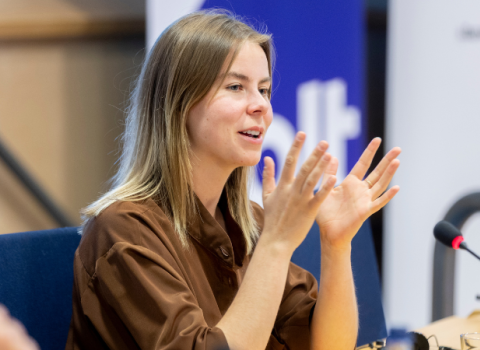The company, which until now has focused on development of a platform technology for creating tissue regeneration "scaffolds", will focus its early efforts on the veterinary market - in particular on treatment of race horses - to prove its concept and bring in revenues at an early stage. It will then approach the markets for human treatment in Europe, the US and lastly Japan. OrthoMimetics is pitching next week at the Great Eastern Investor's Forum in Cambridge
OrthoMimetics plans to bring a series of products to market that help improve surgical procedures for cartilage (ChondoMimetic), ligament (LigaMimetic) and tendon repair (TenoMimetic). Doing so should help delay the need for full joint replacement surgery, which promises to save medical costs and pain. "This will allow patients to either avoid joint replacement altogether, or delay it until a point in life when their first joint replacement can last the rest of their lives," says Lynn.
Many other companies are developing replacements for tissue, but the company claims one of its unique selling points is its products' ability to help the body’s natural repair mechanisms to heal defects. "The tissue regeneration scaffold helps sort out the interface between bone and cartilage," says Lynn.
Lynn, 28, who over the past few years was studying for his doctorate in material science and metallurgy at Cambridge, linked up with Brendon Harley, then also a doctoral candidate at MIT, to develop the platform technology. The two worked to bring together numerous strands of research from both institutions. From MIT came Lorna Gibson’s work with tissue engineering and Ioannis Yannas' technology for regenerating skin. From Cambridge, there was William Bonfield’s development of bone substitution material.
It also helped that Lynn had spent a year before that at the Institute for Frontier Medical Sciences in Kyoto, Japan, watching surgeons do their jobs. "If you want to find solutions in this field, you have to think like a surgeon, and understand the environment in which they operate," he says.
The company’s founders, who include Lynn, Gibson and Yannas, are currently negotiating with the two universities on what rights the institutions have to its future revenue streams. Traditionally, Cambridge has simply taken equity stakes in its startups, but has come to realise, Lynn says, that its benefits were being limited due to the dilution of shares in subsequent rounds.
MIT has had rights not only to equity but also to milestone fees, royalties, and license fees. The danger is that if a startup company agrees to pass on too large of a milestone fee, however, that could impede the future growth of the company. As one of the first spin-outs from the Cambridge-MIT Institute, OrthoMimetics is pioneering new ground in striking an agreement that satisfies all parties. "We are close to signing and I think we have found something that works for everyone," says Lynn. The institute is partly funded by a £65.1 million grant from the UK Department of Trade and Industry.




 A unique international forum for public research organisations and companies to connect their external engagement with strategic interests around their R&D system.
A unique international forum for public research organisations and companies to connect their external engagement with strategic interests around their R&D system.